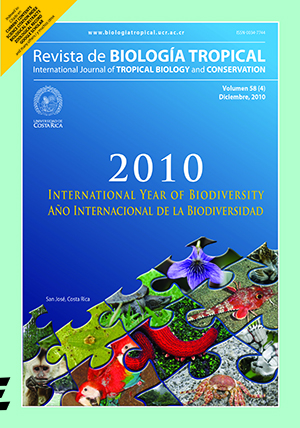Abstract
One of the strongest hypothesis about the maintenance of tree species diversity in tropical areas is disturbance. In order to assess this, the effect of intensive natural disturbances on forest growth and mortality in a thinning canopy was studied after the landfall of hurricane Joan in 1988. We evaluated the growth and mortality rates of the 26 most common tree species of that forest in eastern Nicaragua. Permanent plots were established at two study sites within the damaged area. Growth and mortality rates of all individual trees menor o igual que 3.18cm diameter at breast height were assessed annually from 1990 to 2005. During this period the forest underwent two phases: the building phase (marked by increased number of individuals of tree species present after the hurricane) and the canopy thinning phase (marked by increased competition and mortality). Our results from the thinning phase show that tree survival was independent of species identity and was positively related to the increase in growth rates. The analysis of mortality presented here aims to test the null hypothesis that individual trees die independently of their species identity. These findings were influenced by the mortality observed during the late thinning phase (2003-2005) and provide evidence in favor of a non-niche hypothesis at the thinning phase of forest regeneration.
This work is licensed under a Creative Commons Attribution 4.0 International License.
Copyright (c) 2010 Revista de Biología Tropical
Downloads
Download data is not yet available.

